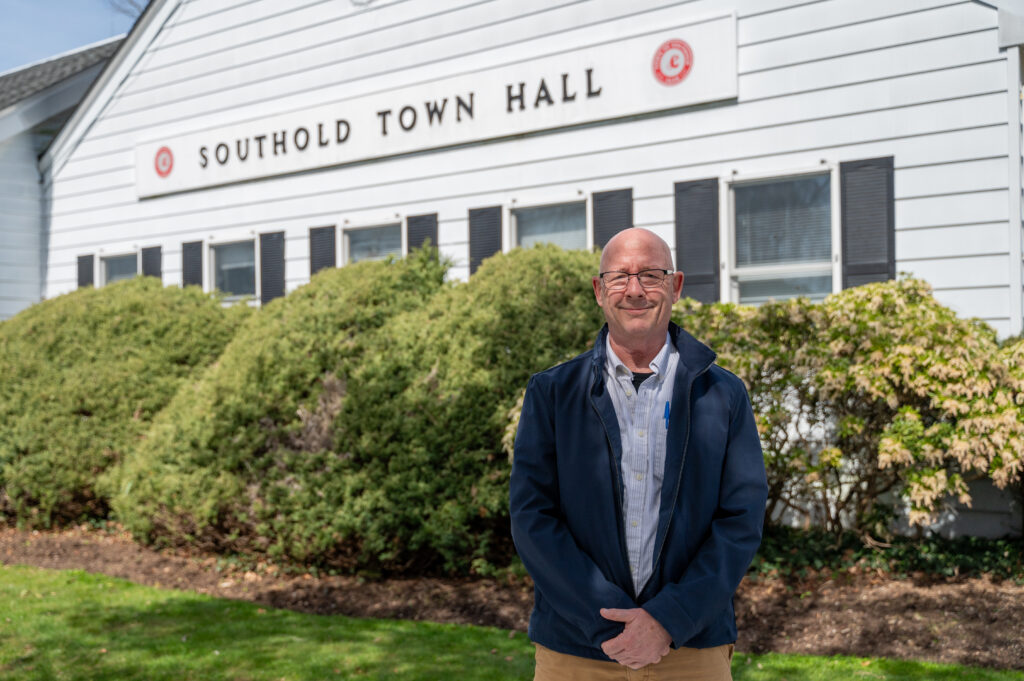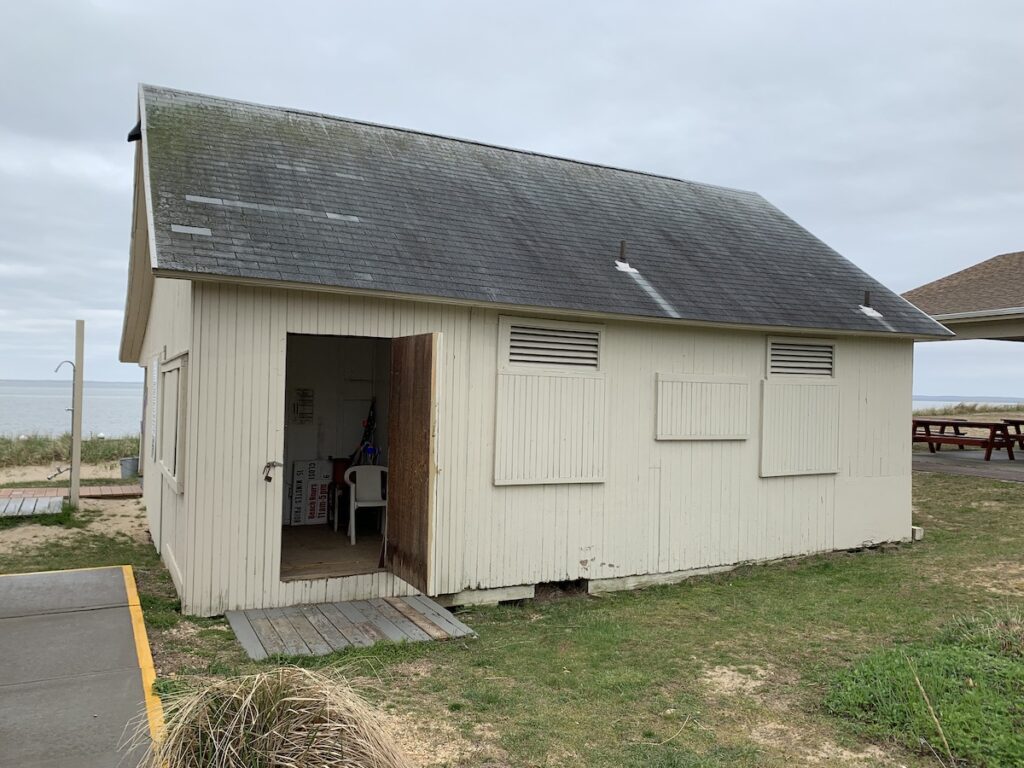Greenport residents, environmental groups want more extensive review of mixed-use proposal

Environmental and neighborhood groups are rallying for a more extensive review of a proposal to build medical offices and affordable housing along Route 25 in Greenport.
The town Planning Board found the site plan complete for the 4.7-acre development in March. Four campus-style buildings are planned for the property, with 12 offices, 40 affordable housing units and 120 parking spaces. The parcel is located at the confluence of county Route 48, state Route 25 and the town-owned Main Street, which may be reconfigured as a roundabout.
Local civic and environmental groups have expressed concern about potential impacts of the project and urged the town Planning Board to issue a positive State Environmental Quality Review Act declaration and require a Draft Environmental Impact Statement.
“Our group is very concerned by the wide range of significant impacts that the proposed project presents and we agree with the recommendations of the Group for the East End and the North Fork Environmental Council that an in-depth review of the site plan application is warranted,” Carol Lindley wrote on behalf of the Greenport North Neighborhood Association in a letter sent to the town in early July.
The project has the potential to create moderate to large environmental impacts, she wrote. The neighborhood group expressed concern about traffic, conformance with zoning code, wastewater management, the proposed density of the project, its impact on community character, affordability and the transformation of “a highly visible, undeveloped parcel located at the corner of two scenic byways.”
Group for the East End and North Fork Environmental Council sent letters earlier this spring requesting a DEIS for the project.
“The purpose of SEQRA is to incorporate the consideration of environmental factors into the existing planning review process at the town level, at the earliest possible time. And so when you have projects like this that require multiple levels of agency review and pose what we believe is potential environmental impact, a draft environmental impact statement is going to provide a transparent, comprehensive review with the ability to provide potential alternatives that will ultimately lead to the best possible outcome that will mitigate environmental impacts,” said Jenn Hartnagel of Group for the East End in an interview.
Group for the East End pointed out in an April 22 letter that the project requires a special exception permit from the Zoning Board of Appeals for the workforce apartments and permission from the Village of Greenport to hook up to the sewer system, which means, if access is denied, the project could impact ground and surface waters.
The group also expressed concern about traffic and the transformation of an undeveloped, “heavily wooded” parcel along scenic byways, conformance with the parcel’s Residential Office designation and the proposed density of the parcel at roughly eight residential units per acre. The letter signed by Ms. Hartnagel argues that the town should evaluate how the development would remain affordable in perpetuity and how the units would be distributed.
“A DEIS is the most practical, transparent and comprehensive approach to reviewing this application. We believe there are several environmental impacts to this site including traffic, wastewater management, density, beauty and affordability, to name a few,” the North Fork Environmental Council wrote in a letter dated May 17, expressing concerns similar to the Group for the East End’s.
A neighbor of the site, Greenport resident Margaret de Cruz, said the town and village should explore solutions for affordable housing that don’t involve cutting down more trees. She suggested “cooperative ownership sharing mortgages and space, while keeping people’s independence and privacy” as one alternative.
“I get so much joy from hearing spring peepers. When I came out here, I used to hear spring peepers everywhere and now I hear them less and less because people have put lawns in and taken over places. We need to keep woods and forests as much as we can, in my opinion, especially now with climate change. That’s how we sequester carbon, that’s how we protect and absorb water,” she said. “There are other places in my opinion where things are already cleared.”
Peconic Landing recently opened a new medical office complex as well, the council added, which may make the additional office space “redundant.”
A local business owner and two members of the town Housing Advisory Commission submitted letters of support for the project in late June, citing the “serious housing crisis” in Southold.
“This particular project has checked all the boxes for success. Forty affordable/workforce apartments, the ability to tie into Greenport Village Sewer System and [Suffolk County Water Authority], as well as the allowable use of the parcel, which is zoned for Office Residential,” wrote Cheryle Amara, an HAC member. She also pointed out that the planned development is less than the allowable density.
In a response to the Group for the East End’s letter, engineering group L. K. McLean Associates, P.C. pointed out on behalf of the applicant that the state Department of Transportation is reviewing a proposed roundabout to mitigate traffic issues at that corner, and said a visual impact assessment conducted by the DOT for the project found “low negative visual impacts.”
The site plan is consistent with the alignment of the proposed roundabout and includes two points of access to Route 25, the agency wrote. Left turns onto the road will be prohibited from the North Road access driveway. They suggested the applicant could provide a traffic study, which should negate the need for a DEIS “in terms of transportation and scenic byways impacts.”
Developer Paul Pawlowski told The Suffolk Times that he’s obtained a letter of approval from village trustees for a sewer hook-up. He also said he plans to conduct a traffic study at the site. A positive declaration, as requested by local groups, would require “a much larger impact statement,” he explained.
“In any project I’ve ever done, I’ve never had a positive declaration because the projects don’t warrant them, and we feel very strongly this one doesn’t either,” he said. “It meets the code. When it comes to the environment, it’s connecting to the sewer, it’s collecting its own stormwater, we don’t even max out the density of the project. We feel that the project actually will improve traffic in the area. So to say this is a [positive declaration] would be a real, real reach because it’s not a large enough project for that. We would never even buy a piece of property, or propose a project where we feel a [positive declaration] would be warranted.”
He said the project would benefit the community and, as proposed, meets requirements set by the parcel’s zoning. He noted the proposal will be privately funded, highlighting the affordable housing crisis on the North Fork.
“My biggest argument against the Group for the East End is, what is their goal?” he said. “Because our goal is to follow the code, which we’re doing, and we have another goal to offer workforce housing. I feel the group should be advocating for this project because in the comprehensive plan it’s literally stated that workforce housing, affordable housing is at crisis levels.”
A letter submitted by attorney Martin Finnegan on behalf of the applicant also argues, in a point-by-point refutation to the letter from Group for the East End, that “the parcel is not a pristine woodland” and the site plan fits with the town comprehensive plan.
“A previous attempt at development was abandoned by a prior owner leaving a rather large concrete foundation, and mounds of excavated dirt and brush,” Mr. Finnegan wrote. “The property is the only RO-zoned parcel in the vicinity, which confirms the Town Board’s recognition of the parcel’s suitability for the mixed-use development that is permissible in the RO zone.”








